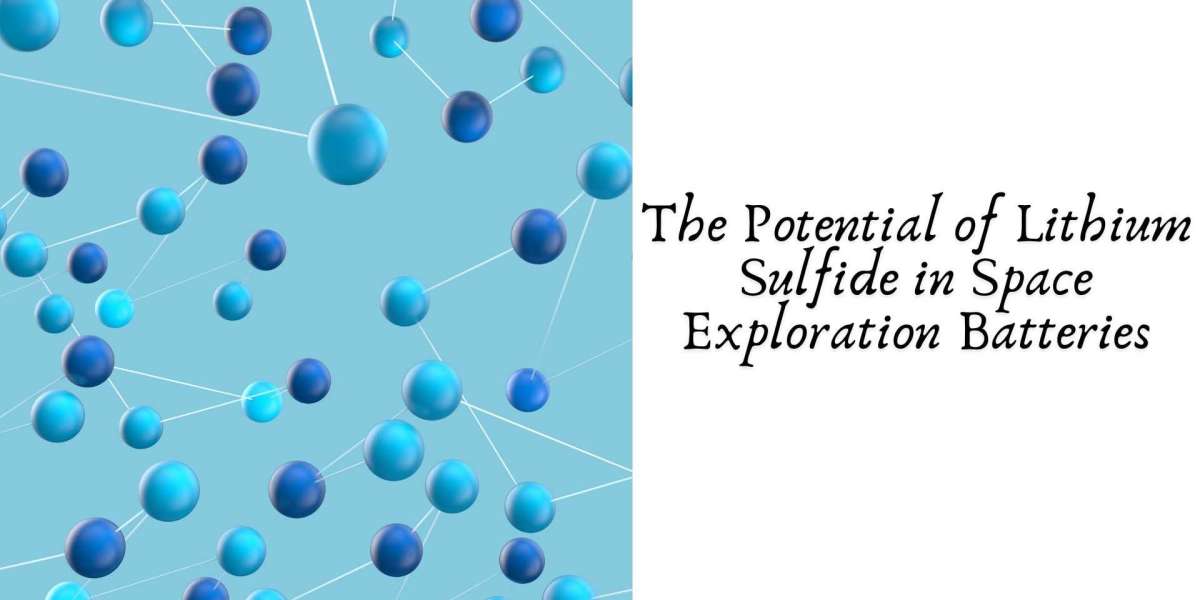Introduction
The demand for high-performance, lightweight, and long-lasting energy storage solutions has never been greater in space exploration. As missions extend beyond Earth's orbit and into deep space, the need for batteries that can withstand extreme conditions while providing high energy density is paramount. Lithium sulfide (Li2S), a promising material in next-generation lithium-sulfur (Li-S) batteries, has gained attention for its potential to revolutionize space battery technology. This article explores the unique properties of lithium sulfide, its advantages, challenges, and its potential role in advancing space exploration.
Understanding Lithium Sulfide in Battery Technology
Lithium sulfide is a key component in lithium-sulfur batteries, which offer significantly higher energy densities compared to traditional lithium-ion (Li-ion) batteries. Li-S batteries utilize sulfur as the cathode and lithium as the anode, with lithium sulfide forming as a crucial intermediate or final discharge product. Unlike conventional lithium-ion batteries, which rely on transition metal oxides, Li-S batteries promise improved energy-to-weight ratios, making them particularly suitable for space applications.
Advantages of Lithium Sulfide for Space Exploration
- High Energy Density: Li-S batteries have an energy density of up to 500 Wh/kg, nearly five times that of traditional Li-ion batteries. This enables longer mission durations and higher payload capacities.
- Lightweight Composition: Since sulfur is abundant and lightweight, Li-S batteries significantly reduce the weight of spacecraft, allowing for more efficient fuel consumption and larger payloads.
- Enhanced Performance in Extreme Conditions: Lithium sulfide-based batteries demonstrate resilience in low-temperature environments, making them ideal for deep-space missions where extreme cold is a concern.
- Abundance and Cost-Effectiveness: Sulfur is widely available and cost-effective compared to rare and expensive materials used in Li-ion batteries, such as cobalt and nickel.
- Reduced Environmental Impact: The elimination of heavy metals reduces the ecological footprint, aligning with sustainable space exploration initiatives.
Challenges and Limitations
Despite their potential, lithium sulfide-based batteries face several challenges that must be addressed before widespread adoption in space applications:
- Cycling Stability: One of the primary issues with Li-S batteries is their poor cycle life. The polysulfide shuttle effect, where lithium polysulfides dissolve in the electrolyte and migrate between electrodes, leads to capacity fade and reduced efficiency.
- Conductivity Issues: Lithium sulfide has low intrinsic conductivity, requiring advanced electrode designs and composite materials to enhance its performance.
- Safety Concerns: The formation of lithium dendrites can lead to short circuits and battery failure. Improved electrolyte formulations and solid-state approaches may help mitigate this risk.
- Developmental Challenges: Despite extensive research, commercial-scale production of lithium sulfide-based batteries remains limited due to technical and manufacturing complexities.
Recent Advances and Future Prospects
Significant research efforts are underway to overcome these limitations and optimize lithium sulfide for space applications. Some notable advancements include:
- Solid-State Electrolytes: Researchers are developing solid-state Li-S batteries that can suppress the polysulfide shuttle effect and enhance safety.
- Nano-Engineered Cathodes: The use of nanostructured sulfur cathodes enhances conductivity and cycle stability, improving overall battery performance.
- Hybrid Electrolytes: The integration of hybrid liquid-solid electrolytes offers improved ionic conductivity and suppresses lithium dendrite formation.
- Protective Coatings: Applying coatings to lithium sulfide particles reduces solubility and extends battery lifespan.
The Role of Lithium Sulfide in Future Space Missions
With the rapid pace of innovation, lithium sulfide could soon play a vital role in powering future space missions. Potential applications include:
- Deep Space Probes: Li-S batteries could support long-duration planetary and interstellar missions, thanks to their high energy density and resistance to extreme temperatures.
- Lunar and Martian Exploration: Lightweight and high-capacity batteries would enhance energy storage for surface rovers, habitats, and scientific instruments on the Moon and Mars.
- Satellites and Space Stations: Next-generation satellites and space stations could benefit from extended operational lifespans and improved energy efficiency.
- Electric Propulsion Systems: Advanced Li-S batteries could serve as power sources for electric propulsion technologies, enabling more efficient deep-space travel.
Conclusion
Lithium sulfide presents an exciting opportunity to revolutionize space battery technology by offering high energy density, reduced weight, and improved performance in harsh environments. While challenges such as cycling stability and safety concerns remain, ongoing research and technological advancements are steadily addressing these issues. As space agencies and private enterprises push the boundaries of exploration, lithium sulfide-based batteries could become a cornerstone of next-generation space missions, paving the way for extended deep-space travel and sustainable extraterrestrial habitats.


